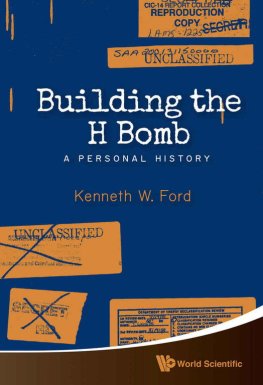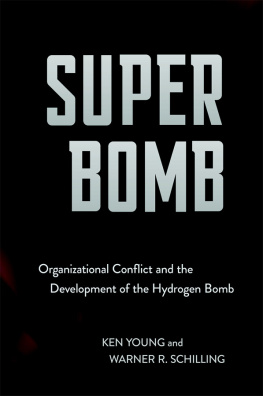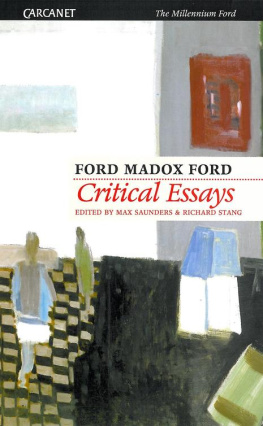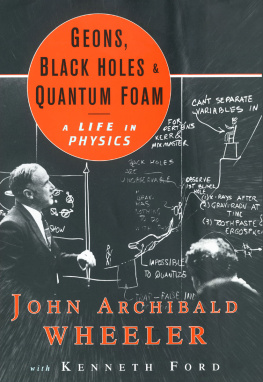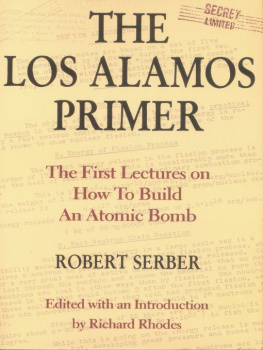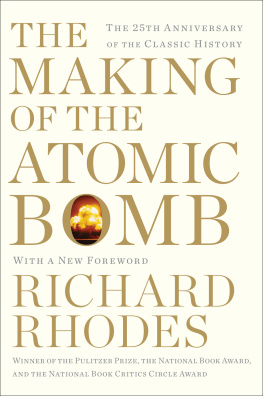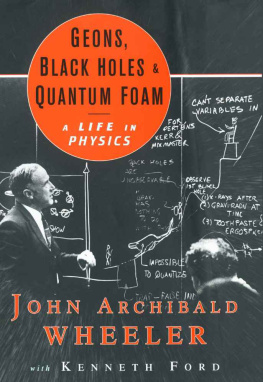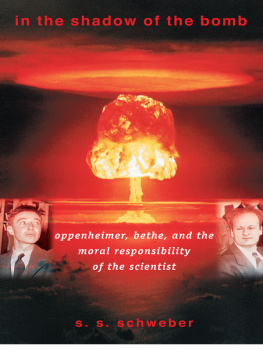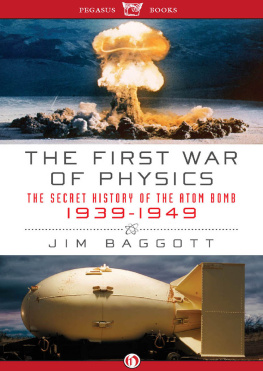Ken Ford has written a truly remarkable book. It is not only the story of his life but it is a primer for the nuclear age. He is one of the few witnesses left of how the hydrogen bomb was created. There are portraits of people like Edward Teller and John Wheeler and the physics is clear. It is a must read for anyone who wants to learn about the history of nuclear weapons.
Jeremy Bernstein, author of Nuclear Iran and A Chorus of Bells and Other Scientific Inquiries.
Ken Fords book provides a first-hand look at the early days of U.S. thrermonuclear weapons design and the work under John Wheeler of the Matterhorn B (for bomb) project at Princeton that focussed on predicting the yield of the first U.S. test of a hydrogen bombMikeon November 1, 1952. Knowing all the participants, I found the account accurate as well as entertaining.
Richard Garwin, principal designer of the Mike thermonuclear device, co-author of Megawatts and Megatons: The Future of Nuclear Power.
Building the H Bomb offers a rare and fascinating insiders look at the making of humankinds most powerful nuclear weapon. Ford combines his trademark talent for explaining physics with a warm, engaging personal story. Amidst the darkness of Cold War paranoia and the nuclear arms race, Ford lets the scientists personalities, their quest for knowledge, and his own youthful innocence shine through. Part physics, part history, part memoir, this book reminds us that science is ultimately a very human endeavor.
Amanda Gefter, author of Trespassing on Einsteins Lawn
A charming and engrossing book about the building of the hydrogen bomb, the individuals who built it, the development of computers and much more from the point of view of a young man who was in the middle of all of it and knew everybody.
Gino Segr, author of Faust in Copenhagen and Ordinary Geniuses, at work on a biography of Enrico Fermi.
The development of the hydrogen weapon that was carried out simultaneously in the USA and the USSR is a wonderful example of dedication, professionalism and brilliant work of scientists in our two countries.
Publications by first-hand participants of these projects are becoming especially precious. This book is a rare example of firsthand recollections of a participant providing popular, but precise description of the H-bomb invention process.
Fords recollections of meetings with many outstanding scientists of the 20th century who have turned into historical figures by now, including those who were very young at that timefor example, Richard Garwinare especially valuable.
The combination of clear description of physical processes and vivid personal emotions with precise depiction of political climate in the USA at that time is of special value.
It was a pleasure to read this book and I wish many would read it.
Zhores I. Alferov, rector of St. Petersburgs Academic University, winner of the 2000 Nobel Prize in Physics, and the subject of Paul Josephsons Lenins Laureate: Zhores Alferovs Life in Communist Science.
Building the H Bomb
A PERSONAL HISTORY
Building the H Bomb
A PERSONAL HISTORY
Kenneth W. Ford

Published by
World Scientific Publishing Co. Pte. Ltd.
5 Toh Tuck Link, Singapore 596224
USA office: 27 Warren Street, Suite 401-402, Hackensack, NJ 07601
UK office: 57 Shelton Street, Covent Garden, London WC2H 9HE
Library of Congress Cataloging-in-Publication Data
Ford, Kenneth William, 1926
Building the H bomb : a personal history / Kenneth W Ford.
pages cm
Includes bibliographical references and index.
ISBN 978-9814632072 (hardcover : alk. paper) -- ISBN 978-9814618793
(pbk.: alk. paper)
1. Hydrogen bomb--Design and construction--History. 2. Hydrogen bomb-
United States--History. 3. Ford, Kenneth William, 1926I. Title.
UG1282.A8F67 2015
623.4'5119--dc23
2014029386
British Library Cataloguing-in-Publication Data
A catalogue record for this book is available from the British Library.
Book design and layout by Adam B. Ford
Fonts used are Lora, by Olga Karpushina and Alexei Vanyashin, available from cyreal.org, Planscribe NF, by Nick Curtis, available at nicksfonts.com, Proxima Nova, by Mark Simonson, available from marksimonson.com, and Special Elite, by Brian J. Bonislawsky, available from astigmatic.com.
Cover images are from the cover of a classified scientific paper by US nuclear physicists Edward Teller and Stanislaw M. Ulam, March 9, 1951, On Heterocatalytic Detonations I: Hydrodynamic Lenses and Radiation Mirrors, at US nuclear weapon design facility Los Alamos Scientific Laboratory, Los Alamos, New Mexico.
Required statement regarding the cover images: Unless otherwise indicated, this information has been authored by an employee or employees of the University of California, operator of the Los Alamos National Laboratory under Contract No. W-7405-ENG-36 with the U.S. Department of Energy. The U.S. Government has rights to use, reproduce, and distribute this information. The public may copy and use this information without charge, provided that this Notice and any statement of authorship are reproduced on all copies. Neither the Government nor the University makes any warranty, express or implied, or assumes any liability or responsibility for the use of this information.
Copyright 2015 by World Scientific Publishing Co. Pte. Ltd.
All rights reserved. This book, or parts thereof, may not be reproduced in any form or by any means, electronic or mechanical, including photocopying, recording or any information storage and retrieval system now known or to be invented, without written permission from the publisher.
For photocopying of material in this volume, please pay a copying fee through the Copyright Clearance Center, Inc., 222 Rosewood Drive, Danvers, MA 01923, USA. In this case permission to photocopy is not required from the publisher.
Printed in Singapore
To the memory of my many nuclear friends who are no longer with us
Table of Contents
Preface
T his book is three things. It is a history of the development of the worlds first hydrogen bomb. It is also a memoir of the author when he was twenty-four to twenty-six years old. And it is a mini-textbook on nuclear physics. Think of it as a three-stranded braid, not a three-ingredient blend. As you proceed, you will encounter bumps here and there as one strand yields to another. I have tried to lighten and brighten the trip with lots of illustrations. I hope that in the end you will conclude that it all hangs together and makes for an agreeable as well as informative ride.
Ken Ford
A Note on Secrecy
A ccording to the United States Department of Energy, this book contains some secrets. I disagree.
During the period that is the focus of this book, 1950-1952, I held what was (and still is) called Q clearance. That gave me access to secret and even some top secret weapons information, and it gave me the opportunity to create such information. In this book, in addition to personal recollections of people and events from that period, I discuss weapons information that may have once been secret but is now in the public domain. I have bent every effort to avoid revealing any information that is still secret.
Any technical details that I provide, such as dimensions or weight or energy yield, are taken from now publicly available sources, not from my very hazy memory (with
Next page

